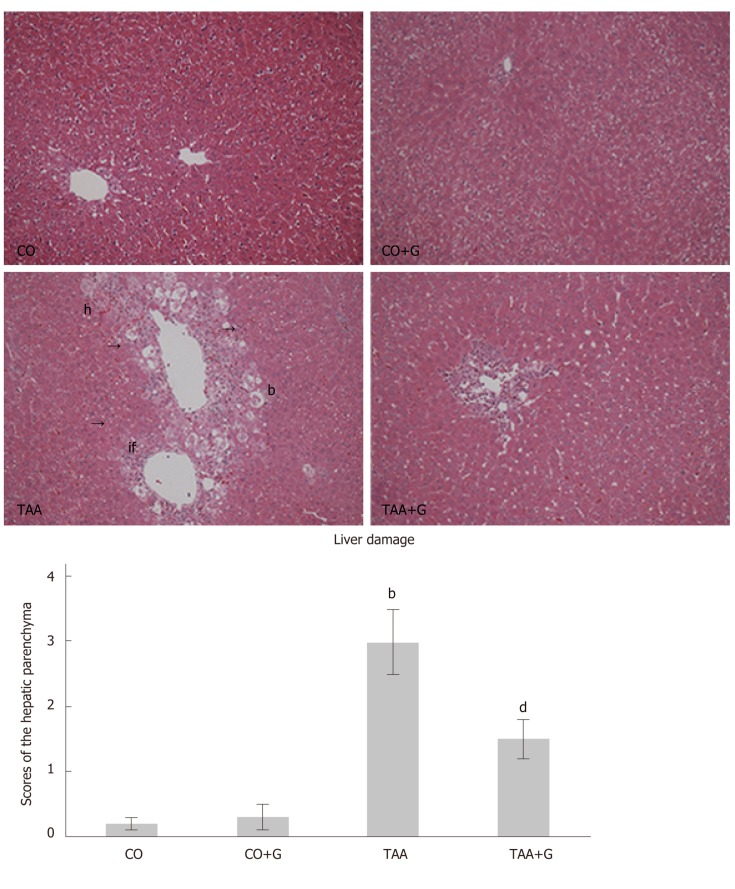Figure 1.
Effect of glutamine on liver injury in animals exposed to an experimental model of severe acute liver failure. Representative photomicrographs; original magnification, 200 ×. Hematoxylin and eosin (HE) stain. In the Thioacetamide (TAA) group, there is visible disruption of the hepatic parenchymal architecture, with inflammatory infiltration, hemorrhage, ballooning, and massive necrosis. The glutamine-treated group (TAA + G) exhibits a reduction of these parameters and restructuring of the hepatic parenchyma. There were no visible tissue changes in the CO and CO + G groups. CO: Control; G: Glutamine; TAA: Thioacetamide. If: Inflammatory infiltrate; h: Hemorrhage; b: Ballooning; n: Necrosis. Values expressed as mean ± SE. bP < 0.001, TAA group vs groups CO and CO + G; dP < 0.01, TAA + G group vs the TAA group.

